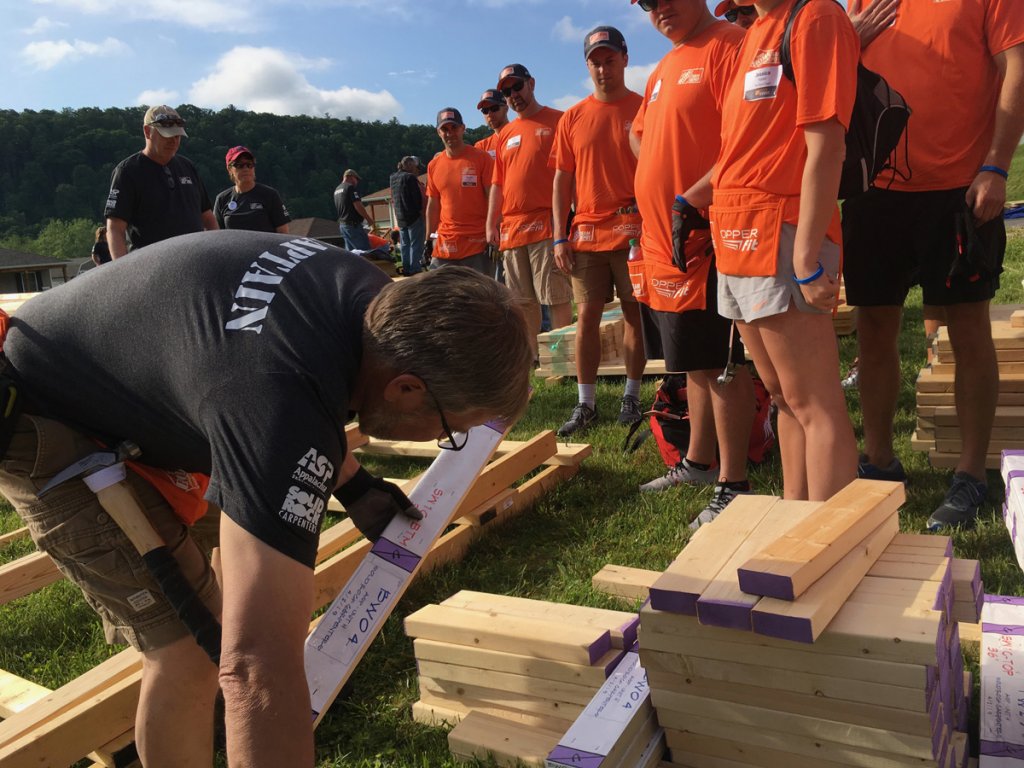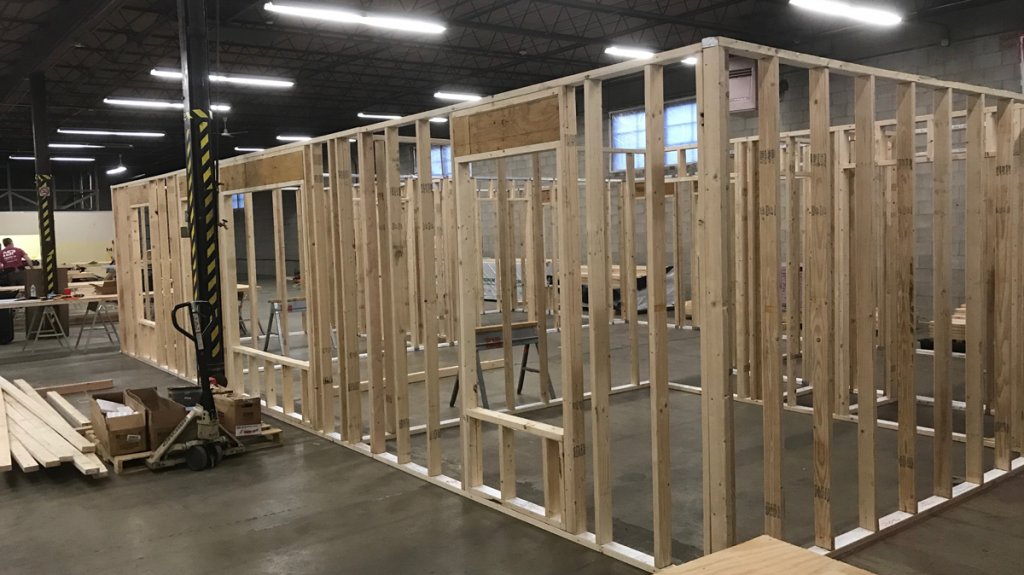Mark Benner of Mark Benner Architects, Ltd. partnered with Solid Rock Carpenters (SRC) more than a decade ago as an affiliate of Habitat for Humanity. The goal for Benner and the rest of the team was to take the mission of building homes for needy members of the community a step further.
Beneficiaries of these efforts range from folks who have lost homes due to extreme weather, those suffering from local low-income housing shortages or sudden changes in their housing security.
Benner works with groups in Chicago that frame walls and ship them where they are needed. Smaller teams then travel to other locations to put the homes together. Homes built as a result of this effort can be found throughout Louisiana, Mississippi and the Appalachia region.
Non-profit groups rely on volunteer labor, which in this case is well-meaning, but often unskilled. Their good hearts and intentions go a long way – but when the task at hand is house building, there needs to be some semblance of expertise and fool-proofing going on. That’s why groups like the Appalachia Service Project (ASP) have in the past, typically limited their work to renovation or remodeling existing homes.

ASP entered in a partnership with the Home Depot Foundation, responding to an urgent need for housing after a flood wiped out much of the town of White Sulphur Springs, WV back in 2016. A local architect arranged the acquisition of building sites on higher ground. New homes were needed, of course, but the resources to make it happen quickly just didn’t exist. Or so they thought.
Enter Benner’s idea to streamline and speed the process at the same time, using Archicad.
“I created panel framing diagrams for every single wall in the house. We shipped these BIM-based drawings, giving the volunteers a clear picture of what it is they’re building. All the pre-cut materials are wrapped up with a copy of the drawing that goes along with that wall. Anybody off the street would be able to come in, pick up the wall assembly and build it reliably. We’ve made this possible.”
The new methodology Benner applied to these volunteer group builds resulted in the walls assembly for twelve homes being built over an event that lasted for three hours. Streamlining the process with these instructions developed in Archicad may just be the understatement of the year.

But Benner is not resting on any laurels.
“It is possible that our system could be adopted by other groups that step in to conduct disaster relief and recovery efforts. We now print actual sized labels so that volunteers only need pair up cut components, following an ID number and an orientation diagram. This system could allow for component creation in one location and assembly in another without the need for skilled labor doing the actual work.”
Three mature model homes fit into Benner’s scenarios. All one-story homes can be configured as a studio or one-bedroom version – with flexibility to be configured in differing layouts. Window and door units can be built separately and then brought to the wall to further automate the process.
“It is a very data-rich process. Every wall has a unique identification, which tells you construction sequence and position. When I create the documentation, showing each individual wall, we’re utilizing automatic labeling. We’ve expanded this the bring in color-coding for the stud locations.”
An added benefit to this process beyond timesaving, applies to material purchasing. Materials that are donated or bought with charitable donations can be done without fear of overbuying.
“The way I’m modeling the project, we’re actually prototyping it. I’m placing studs where they’ll actually go. We can then accurately calculate materials, length of headers, lengths of plates. The system produces a live material and cut list.”
That’s not to say there aren’t moments of concern when the number of nails seems to dwindle faster than anticipated, as happened on one project. Benner’s system proved accurate and they had nails to spare.


“The materials list is very tight. Once in the field, we surveyed the number of nails in buckets that were accessible to us, fearing we’d have to make a quick run to get more. But once we had finished for the day, there were plenty left over.”
So short of a “loaves and fishes” resolution to any potential nail shortage scenario – Benner learned to trust his process, and follow his passion to provide housing to folks in the Appalachian Mountains – work he began as a high school graduate with ASP in the mid-eighties.
“I had early exposure to the valuable work ASP does. I have always clearly seen the link between housing as a foundation for success. My mission here is simple. Through the use of Archicad and my skill level, I can impact the lives of so many. Not only the people who eventually live in the homes we build, but by making our work accessible to the volunteers who just want to help others. I consider it a win-win.”
Through the use of Archicad and my skill level, I can impact the lives of so many.